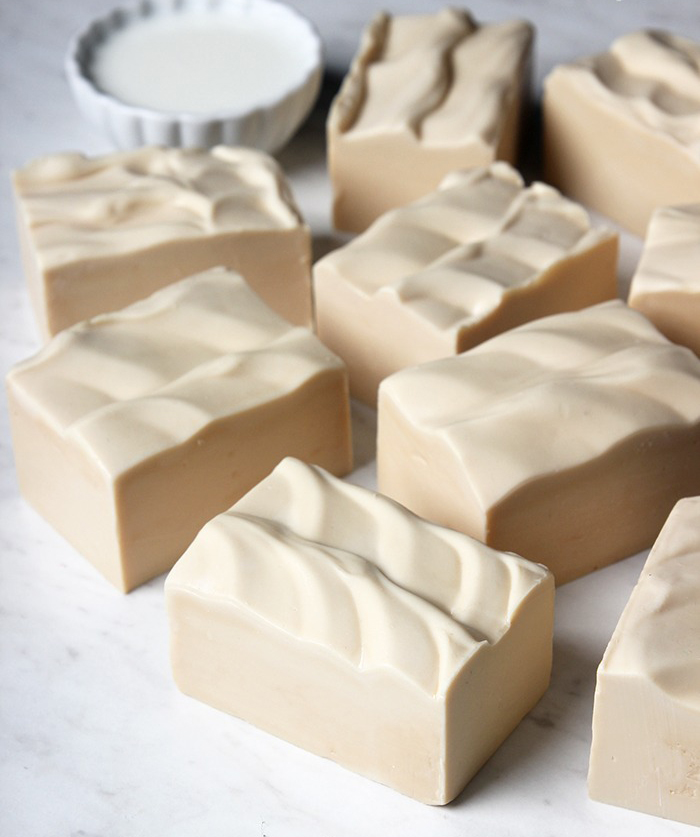
If you've never tried cold process soap made with milk, you're in for a treat. It has a creamy, luxurious texture that's great for those with dry or sensitive skin. You can use any kind of milk you like - cow, goat, almond, coconut, etc.
It does require some extra prep work. When you add lye to liquid, the temperatures can reach up to 200° F. That can scorch the natural sugars in the milk, which causes discoloration and an unpleasant smell. You can see what that looks like in the video below.
The soap is fine to use and the smell fades as it cures. But if you want a creamy white color, you need to keep temperatures low.
First, choose the type of milk you want to use. Each one adds a slightly different feel to soap, so it will take some experimenting to find your favorite. If you're using powdered goat milk or coconut milk, use 1 ounce per 8 ounces of distilled water.
Next, choose how you want to incorporate the milk.
Adding milk at trace
Find out how much liquid the recipe needs with our Lye Calculator. Then, subtract 2-4 ounces from the total - this will be the milk you add at trace. Measure it into a small cup and place it in the fridge.
The rest of the liquid will be room temperature distilled water. Add the lye to the water and stir until it's clear. Place the container in the fridge.
Prepare your oils. When the oils and lye water are around 70-85° F, combine them and stick blend until thin trace. Add the milk from earlier and finish your design. Place the mold in the freezer for 4-24 hours, remove to room temperature for 2-3 days, and then cut.
This method is nice and easy. However, the bars won't have the same creamy feeling as recipes that use milk in place of water.
Adding lye to milk
In this example, we use classic 2% cow milk. Measure out how much you need for your recipe plus a few extra ounces. That will account for any loss from transferring containers. Then, pour the milk into ice cube trays and allow it to freeze overnight. When you’re ready to make soap, measure your lye in a small heat-safe container and the frozen milk cubes in a medium heat-safe container. We like to place the medium container in an ice bath to keep it extra cold.
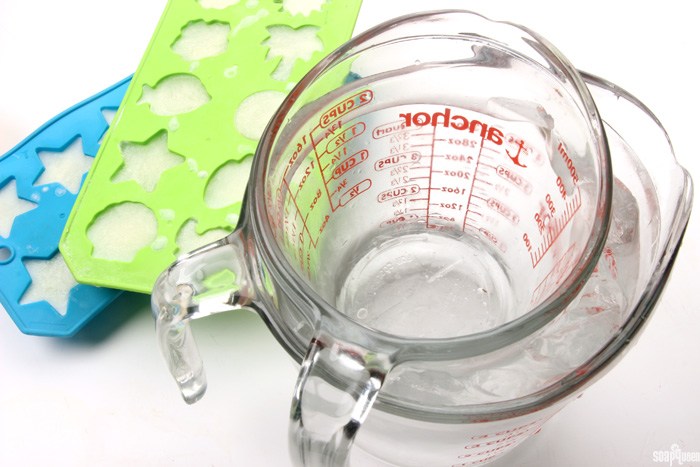
Add a spoonful of the lye onto the milk ice cubes. Stir carefully for a few minutes, then add another spoonful.
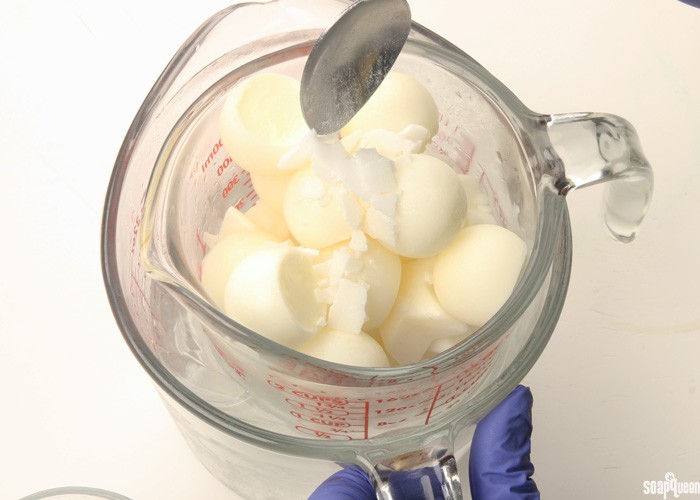
This process takes about 10 minutes. It's necessary to keep the temperatures low - if you add the lye all at once, the milk can scorch. As you continue to add lye and stir, the milk starts melting.
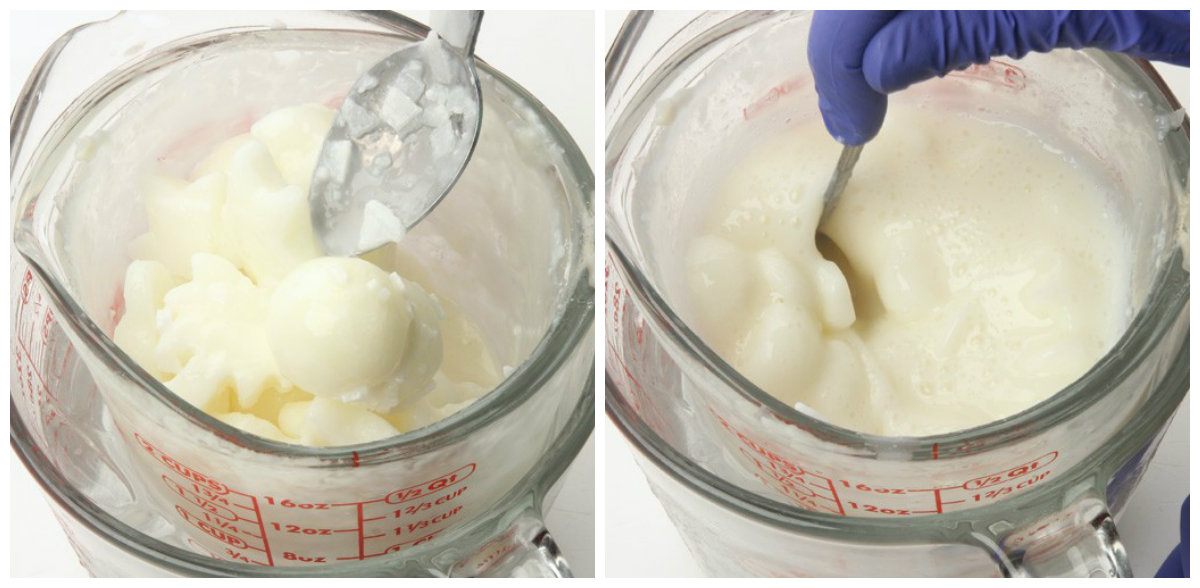
Once all the lye is added, keep stirring for another 1-2 minutes to ensure it's fully dissolved. Patience is key! Any undissolved lye in your soap can cause skin irritation or burns.
You can add sodium lactate to harden the soap so it unmolds more quickly. The usage rate is 1 teaspoon per pound of oils.
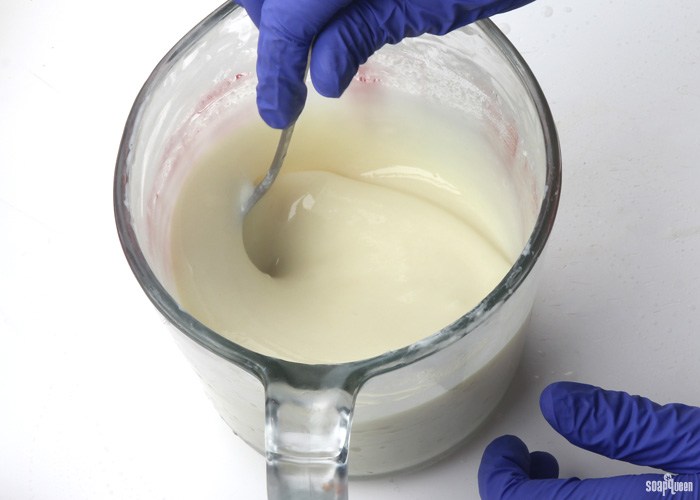
The milk is now ready to use! Ideally, it should be around 70-90° F and your oils around 120° F. To be extra careful, you can pour the milk through a strainer to catch any undissolved flakes of lye. Then, make soap like normal.
Once the soap is in the mold, put it in the freezer for 24 hours. If it goes through gel phase it can scorch, even with all the extra prep work. Let it sit at room temperature for 2-3 days, unmold, and enjoy!
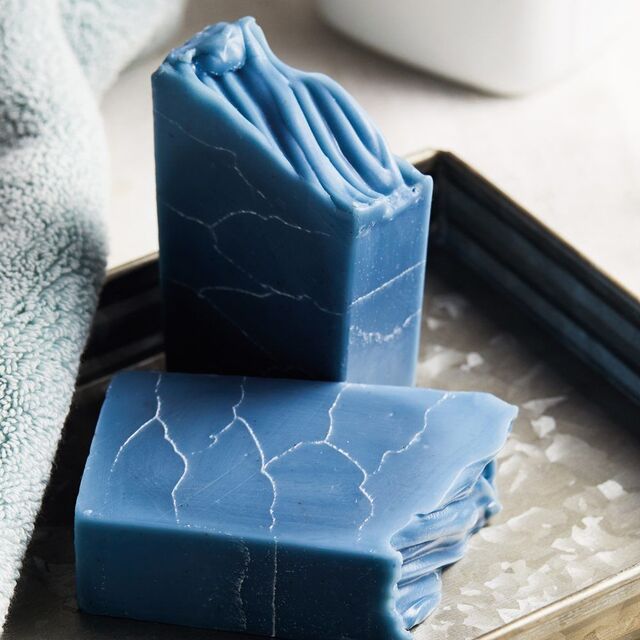
Milk Soap Projects
Flax Milk Layered Soap
Poppy Seeds and Swirls Soap
Swirl Buttermilk Castile Soap
Creamy Goat Milk Soap

